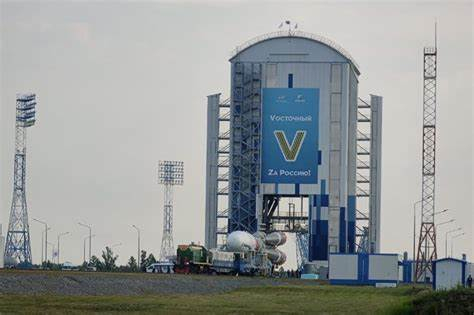In a historic move, Russia's space endeavor has taken a giant leap with the launch of Luna-25, its first lunar mission in nearly half a century. Riding atop a Soyuz 2.1v rocket, Luna-25 embarked on its journey on August 11, 2023. The mission's primary objective? A delicate touchdown on the unexplored South Pole of the Moon. This ambitious aim positions Russia as a contender for the pioneering feat of landing on this challenging lunar terrain.

But as the cosmic drama unfolds, Russia isn't the only player in the race for lunar glory this month. India, having previously tasted success with its Chandrayaan-2 mission, is now eyeing a second lunar touchdown with Chandrayaan-3. Launched a mere four years after its predecessor, Chandrayaan-3 lifted off on July 14, 2023, propelled by the LVM-3 rocket. Just like Luna-25, Chandrayaan-3 also seeks to achieve a soft landing on the Moon's South Pole, with a target date around August 23 or 24.
The Lunar Duel: A Race Against Time
While Luna-25 and Chandrayaan-3 share a common aspiration—a gentle lunar landing—they diverge in their journey and timing. Luna-25 is on a swift trajectory, planning to reach the Moon within five days and subsequently spend 5-7 days orbiting it. The climax is set for around August 21, when Luna-25 is slated to attempt its momentous landing. On the other hand, Chandrayaan-3, charting a more leisurely course, is anticipated to conclude its nearly 40-day journey with a soft lunar landing around August 23.
Contrasts in Missions and Components
Notably, the two missions bear distinctive characteristics. Luna-25's launch marks Russia's return to lunar exploration after a hiatus spanning five decades. Its specialized instruments and tools are calibrated to ensure a safe landing on the Moon's rugged South Pole. In contrast, Chandrayaan-3 carries a trio of crucial components: a lander module (LM), a rover, and a propulsion module (PM), each playing a vital role in India's lunar venture.
Mission Lifespans: A Tale of Duration
A stark divergence emerges in the anticipated lifespans of the missions. While Chandrayaan-3 is expected to operate for a mere 14 Earth days, Luna-25 is set for an extended stay of approximately one year. This prolonged presence promises a wealth of insights and observations, setting the stage for unprecedented discoveries.
A Promise of Exploration and Learning
Crucially, the disparate landing sites for Luna-25 and Chandrayaan-3 eliminate any possibility of collision or mishap, ensuring that each mission can proceed smoothly towards their respective lunar destinations.
As Luna-25 and Chandrayaan-3 journey towards their shared goal of a South Pole landing, the world watches with bated breath. These missions not only signify a scientific triumph for Russia and India but also exemplify the spirit of human exploration, curiosity, and cooperation that extends beyond our terrestrial boundaries.









